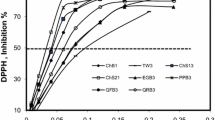Abstract
The amount and composition of lipophilic extractives, and especially of sterols and triterpenyl alcohols, were analysed for six important pulpwood species, i.e., Scots pine, Loblolly and Longleaf pine, Norway spruce, Siberian larch and Silver birch. Sulphate soaps (tall oil soaps) derived from these species were also analysed. Scots pine and Loblolly pine contained the highest amounts and Siberian larch the lowest amounts of lipophilic extractives. The highest amounts of sterols were found in birch. The sterols in wood occurred mainly as esters. Sitosterol was the main sterol in all species. Isolation and analysis of the steryl esters confirmed the natural occurrence of sitostanol esters in wood. Considering the use of sitosterol or sitostanol as cholesterol-lowering component in food products, a high ratio of sitosterol to campesterol is beneficial. This ratio was high in birch and pines but clearly lower in spruce and larch. The highest ratios of sitosterol to campesterol were found in soaps from pines and birch.
Zusammenfassung
Menge und Zusammensetzung der lipophilen Extrakte, speziell der Sterole und der Triterpenylalkohole wurden in sechs wichtigen Faserholzarten untersucht (drei Kiefernarten, Fichte, Sibirische Lärche und Birke). Auch die Tallölseifen aus dem Sulfataufschluss dieser Holzarten wurden untersucht. Der Gehalt an lipophilen Extrakten war bei den Kiefernarten Pinus sylvestris und Pinus taeda am höchsten, bei Larix sibirica am geringsten. Die höchsten Werte für die Sterole fanden sich bei Betula pendula. Die Sterole im Holz kommen meist als Ester vor. Sitosterol war das wichtigste Sterol in allen Holzarten. Isolierung und Analyse der Sterolester bestätigten das natürliche Vorkommen von Sitostanolestern im Holz. Für den Einsatz von Sitosterol oder Sitostanol als Cholesterinsenker in Nahrungsmitteln ist es von Vorteil, wenn das Verhältnis Sitosterol zu Campesterol hoch ist. Dieses Verhältnis ist hoch in der Birke und den Kiefernarten, wesentlich niedriger in Fichte und Lärche. Die höchsten Verhältnisse von Sitosterol zu Campesterol fanden sich in den Tallölseifen von Kiefern und von der Birke.
Similar content being viewed by others
References
Conner AH (1989) Chemistry of other components in naval stores. In: Zinkel DF, Russell J (eds) Naval Stores – Production, Chemistry, Utilization. Pulp Chemicals Association, New York, pp 440–475
Ekman R, Peltonen C, Hirvonen P, Pensar G, von Weissenberg K (1979) Distribution and seasonal variation of extractives in Norway spruce. Acta Acad Abo Ser B 39(8):1–26
Ekman R, Holmbom B (2000) The chemistry of wood resin. In: Back EL, Allen LH (eds) Pitch Control, Wood Resin and Deresination. TAPPI Press, Atlanta, pp 37–76
Ekman R, Holmbom B (1989) Analysis by gas chromatography of the wood extractives in pulp and water samples from mechanical pulping of spruce. Nord Pulp Pap Res J 4:16–24
Fisher F, Koch H, Borchers B, Höntsch R, Pruzina K-D (1981) Gewinnung und Verwertung von Phytosterolen aus Holz. Pharmazie 36:456–462
Holmbom B, Avela E (1971) Studies on tall oil from pine and birch. II. Unsaponifiable constitutents in sulphate soaps and in crude tall oils. Acta Acad Abo Ser B 31(16):1–18
Holmbom B, Avela E (1976) Method for refining of soaps using solvent extraction. U.S. Patent 3,965,085
Holmbom B, Ekman R (1978) Tall oil precursors of Scots pine and Common spruce and their change during sulphate pulping. Acta Acad Abo Ser B 38(3):1–11
Miettinen TA, Puska P, Gylling H, Vartiainen E (1995) Reduction of serum cholesterol with sitostanol-ester margarine in a mildly hypercholesteremic population. New Engl J Med 333:1308–1312
Paasonen PK (1967) Extractives of birchwood and birchsulfate pulp. Pap Puu-Pap Tim 49:3–15
Saranpää P (1990) Heartwood Formation in Stems of Pinus silvestris L. Lipids and Carbohydrates of Sapwood and Heartwood and Ultrastructure of Ray Parenchyma Cells. Ph D Thesis. Publ Dept Bot No 14. University of Helsinki, Finland
Zinkel DF (1975) Tall oil precursors of Loblolly pine. Tappi J 58(2):118–121
Yildirim H, Holmbom B (1978) Investigations on the wood extractives of pine species from Turkey. II. Composition of fatty and resin acids in Pinus silvestris and Pinus nigra. Acta Acad Abo Ser B 37(4):1–6
Zinkel DF, Foster DO (1980) Tall oil precursors in the sapwood of four southern pines. Tappi J 63(5):137–139
Author information
Authors and Affiliations
Corresponding author
Rights and permissions
About this article
Cite this article
Vikström, F., Holmbom, B. & Hamunen, A. Sterols and Triterpenyl alcohols in common pulpwoods and black liquor soaps. Holz Roh Werkst 63, 303–308 (2005). https://doi.org/10.1007/s00107-005-0025-4
Published:
Issue Date:
DOI: https://doi.org/10.1007/s00107-005-0025-4



